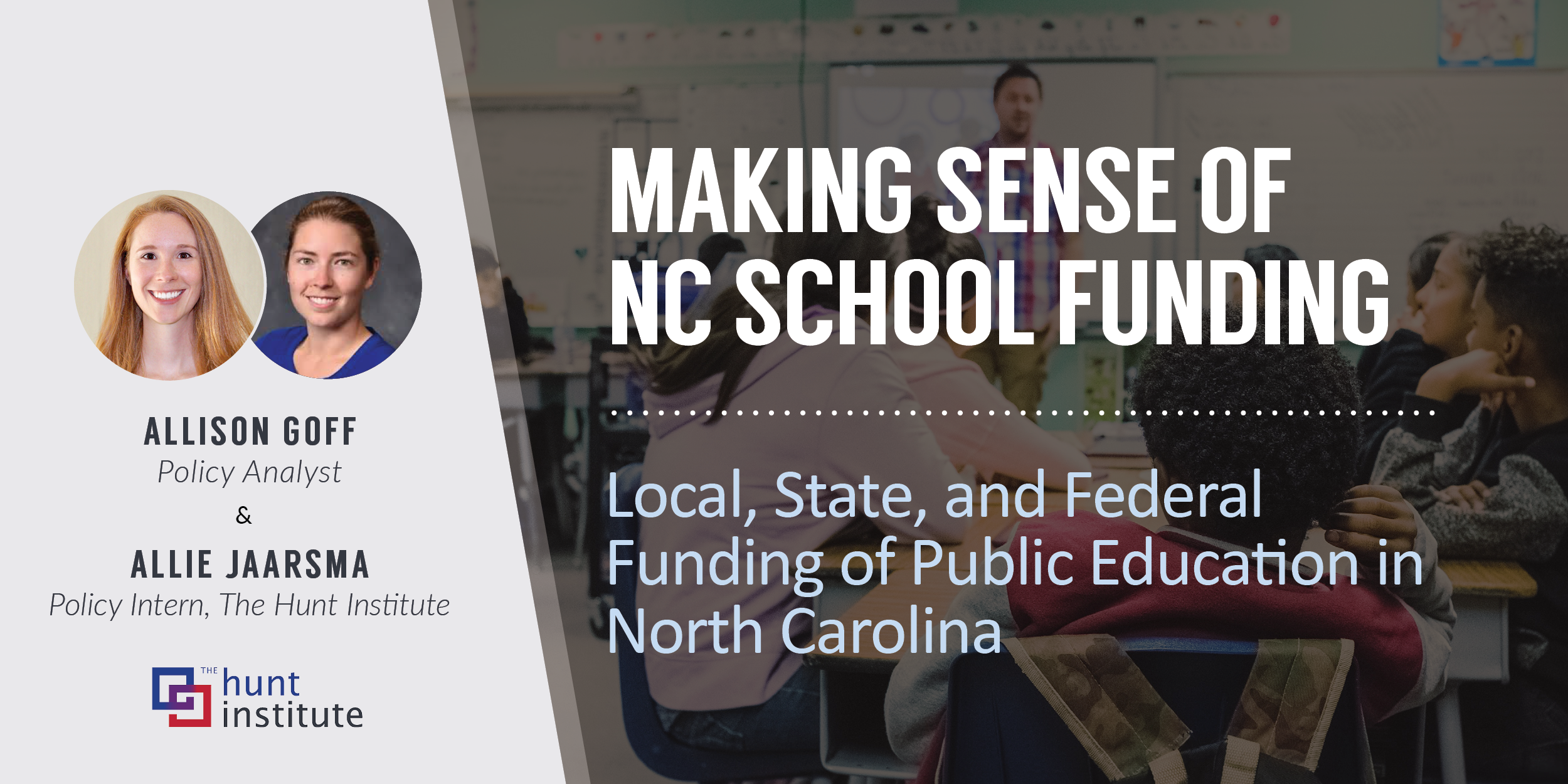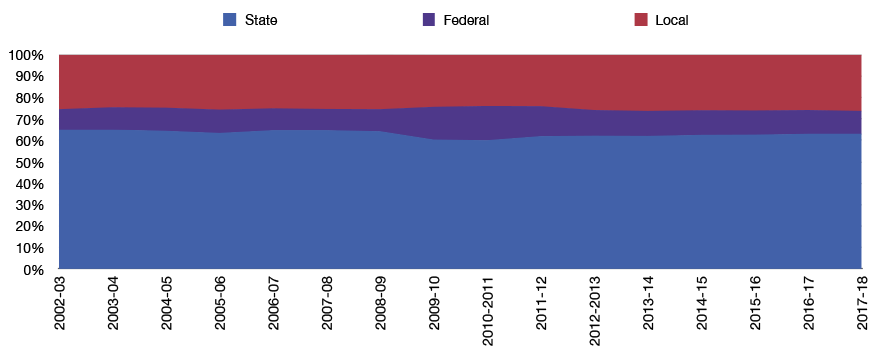Making Sense of NC School Funding: Local, State, and Federal Funding of Public Education in North Carolina
March 18, 2020

In Part 3 of our Making Sense of NC School Funding blog series, we take a closer look at the history of school funding in the state and the role federal and local dollars have in supplementing state funds.
North Carolina has a storied history of investment in public education. This commitment was first spelled out in the state’s 1868 constitution, which guaranteed “the right to the privilege of education” for all children and confirmed that it was the state’s duty to “guard and maintain that right.” When it came to school funding, however, the General Assembly’s involvement was limited: the state passed legislation allowing counties to issue bonds, but the counties were the ones responsible for raising the necessary money.
By 1931, the state realized this model wasn’t sustainable. Counties had been hit hard by the Great Depression, and they no longer had the capacity to keep schools open without additional support. That year, the General Assembly put forward the School Machinery Act, which provided a minimum level of funding to every county in the state to cover the cost of operating schools. Counties still needed to fund school construction and maintenance, but all other costs fell to the state—a dramatic reversal from the previous system and one that ensured that North Carolina didn’t have to close any public schools because of the Depression.
That legislation also set the stage for the system of school funding we have today, where the state provides more than 60 percent of funding for public school expenditures.
Comparing federal, state, and local funding
North Carolina schools are funded through three main sources: federal allotments, state allotments, and local allotments. In the 2017–18 school year, the federal government provided funding for about 11 percent of total public school expenditures, the state provided 63 percent, and counties provided the remaining 26 percent. There is, however, variation across the state’s 115 school districts, with some districts receiving more federal or state funding, while others are able to raise more money at the local level.
This breakdown has also varied over time. The state has consistently funded at least 60 percent of total public-school expenditures in recent years, but that number fell from 65.1 percent in 2002 to a post-recession low of 60.1 percent in 2010. The state has gradually built that support back up over the past eight years, but some districts have had to increasingly rely on local supplements.
Distribution of federal, state, and local dollars in North Carolina Public Education (2002 – 2018)

Use of federal funds
More than three-quarters of the federal funding granted to North Carolina public schools in 2018–19 came from two programs: Title I of the Elementary and Secondary Education Act (ESEA) and Title VI of the Individuals with Disabilities Education Act (IDEA).
ESEA Title I funds go to districts with large populations of children from low-income families. The U.S. Department of Education distributes funding based on census poverty estimates for each district, and districts qualify for different levels of funding depending on their concentrations of children in poverty. These funds play an important role in supporting both academic and economic outcomes for low-income students.
IDEA funds are used to provide special education services to students with disabilities. Funds are given directly to states using a formula based on past funding amounts, the total number of children in the state aged 3 through 21, and the number of children living in poverty. The state then passes most of these funds on to districts to support special education programming and services at the school level.
Use of state funds
The General Assembly is constitutionally required to maintain a “general and uniform system of free public education” in North Carolina. In practice, this means that the state funds a wide variety of programs that help schools operate, with the legislature determining overall funding amounts. Schools also receive state funds through programs like the North Carolina Education Lottery, which contributes 4 percent to the state’s public school fund. The largest expenditure by far is paying the salaries of more than 100,000 North Carolina teachers and administrators, but the state also funds things like textbooks, school technology, and transportation.
Use of local funds
In North Carolina, counties are responsible for building, maintaining, and equipping school facilities. State statute requires that counties set aside a portion of their sales taxes for this purpose, but counties are also able to issue bonds for school construction projects. Local funds can also be used to supplement school operating expenses and increase teacher salaries. Counties have increasingly been relying on local funds for these supplemental expenses, which has led to some funding disparities between higher- and lower-wealth districts.
Authors

Next week on the Making Sense of NC School Funding blog series we will look specifically at North Carolina’s Resource Allocation Model of school funding and explain the largest categories of allotments.


